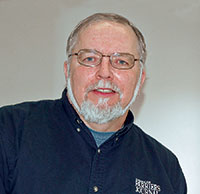My first attempt at writing a cover piece for a magazine was a memorable one — and parts of the memory still make me wince.
I’d been hired by a statewide business-to-business magazine primarily to do shorter pieces, such as company profiles and industry briefs. After a few months, the editor gave me a shot at a cover piece. I worked hard on it and felt pretty good about it when I left it on her desk.
The next day, she called me over and I got to sit there while she tore it to pieces. It wasn’t much fun and when she finished, I went out for a walk to cool down a little. It was January in Wisconsin, so that wasn’t hard to do.
But it also wasn’t hard to do because as I thought about it, I realized her criticism was right on the mark. I went back, put fresh paper in my typewriter (yes, it was that long ago) and rewrote the story, keeping her critique fresh in my mind — easy to do, as my original still laid bleeding red ink on my desk.
Voice On The Phone
That memory came back to me last week when I spent a day with Loomis, Calif., farrier, Donnie Karr. Karr told me about a similar experience he went through a while after he had embarked on his shoeing career 13 years ago.
“A horse I’d shod wound up down at the Loomis Basin Equine Medical Center,” recalled Karr. “My phone rang and it was Blake Brown (who has since retired as the center’s staff farrier). He asked me, ‘Can you take a little constructive criticism?’”
That’s probably not the way any of us would want a phone call to start. But Karr listened to Brown and accepted the critique. He learned from the experience, and still seeks Brown’s advice on some cases.
Not So Hot
A couple of years ago, Jim Quick told me a similar story. The Longmont, Colo., farrier had been doing pretty well at local shoeing competitions and decided to test his skills at a bigger contest.
“I started thinking I was pretty hot stuff,” he recalled. But at that higher level, he finished 11th. He approached Shayne Carter, asked what had been wrong with his work.
“He showed me,” said Quick with a wry laugh. “For about an hour, he showed me.”
But Quick also found that Carter, the Draper, Utah, farrier and other top competitors were not only willing to tell him what he did wrong, they were also willing to tell him how he could improve.
Quick obviously took advantage of those lessons. He went on not only to be a top competitor, but became a judge himself. He’s judged what he calls the “Triple Crown,” of shoeing contests: The World Championship Blacksmith’s Competition, in Calgary, Alberta; The North American Championships at the American Farrier’s Association Convention; and the Stoneleigh Competition at Calgary.
Learning to accept constructive criticism is a part of growing as a professional. It can be particularly important in a hoof-care career, where it’s easy to become isolated and set in your ways. It makes sense to ask someone you respect to review your work from time to time.
All you have to do is set your ego aside, listen to what you are told and learn from it. And maybe take a little walk to cool down — even if you’re not in Wisconsin in January.








Post a comment
Report Abusive Comment